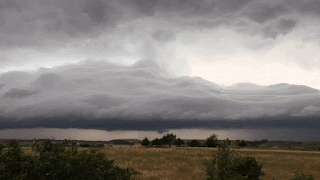 ♫I'm in love with the girl that I'm talking about
♫I'm in love with the girl that I'm talking aboutI'm in love with the girl I can't live without
I'm in love but I sure picked a bad time
To be in love
To be in love♫ Grand Funk Railroad
That song is stuck in my head, an "earworm" that I can't get rid of whenever I see this rose. I've never followed Grand Funk Railroad, couldn't name a single song they wrote before I researched them today, and barely knew that they were (are?) a music group, but this tune still leaps right out of my ancient memories.
I'm smitten, today, with a new rose in my garden. 'Camaïeux' is a planting made last year as I began my search for Old Garden and Rugosa roses that might be resistant to Rose Rosette Disease. Combining that search with my weakness for striped roses, the descriptions of 'Camaïeux' seemed like she would be a natural addition to my garden, so I made the purchase hastily online with trembling fingers hurrying the keyboard, so as not to miss its window of availability.
And then, last week, she opened for the first time, 'Camaïeux', the newly risen princess of my roses. She's so young yet that I have only a few blooms to show you, so young that a picture of the bush wouldn't be representative of her ultimate form, but I just have to share her now with the world.
 'Camaïeux' was bred, in France of course, by Gendron, and introduced by Vibert in 1830. She is a violet-striped Gallica who blooms once in the summer and is said to mature at 3' X 3'. These three-inch blooms have a strong Gallica fragrance for me, and are very double, ultimately opening flat with a button eye form. The foliage seems healthy at present, with no signs of the mildew that Gallicas' seem to fight in my garden, and even as a baby she survived cane-hardy in a winter where other long-established roses have been nipped. I have high hopes for 'Camaïeux'.
'Camaïeux' was bred, in France of course, by Gendron, and introduced by Vibert in 1830. She is a violet-striped Gallica who blooms once in the summer and is said to mature at 3' X 3'. These three-inch blooms have a strong Gallica fragrance for me, and are very double, ultimately opening flat with a button eye form. The foliage seems healthy at present, with no signs of the mildew that Gallicas' seem to fight in my garden, and even as a baby she survived cane-hardy in a winter where other long-established roses have been nipped. I have high hopes for 'Camaïeux'.As it turns out, by expanding the Gallica contingent of my garden and blog, I'm now also going to increase my iTunes library. My brief glimpse into the background of Grand Funk Railroad has opened me to the possibilities of this band known best for We're An American Band, and The Loco-Motion. It is Some Kind of Wonderful that I never realized that I knew and loved so many of their songs, but their tracks are evidently carved along the neurons of my childhood memories as strongly as the sunshine days of my youth. At least, for a mere $7.99 purchase in iTunes, I now have new earworms to play over and over in my head, providing variety down the lonely path to insanity.















